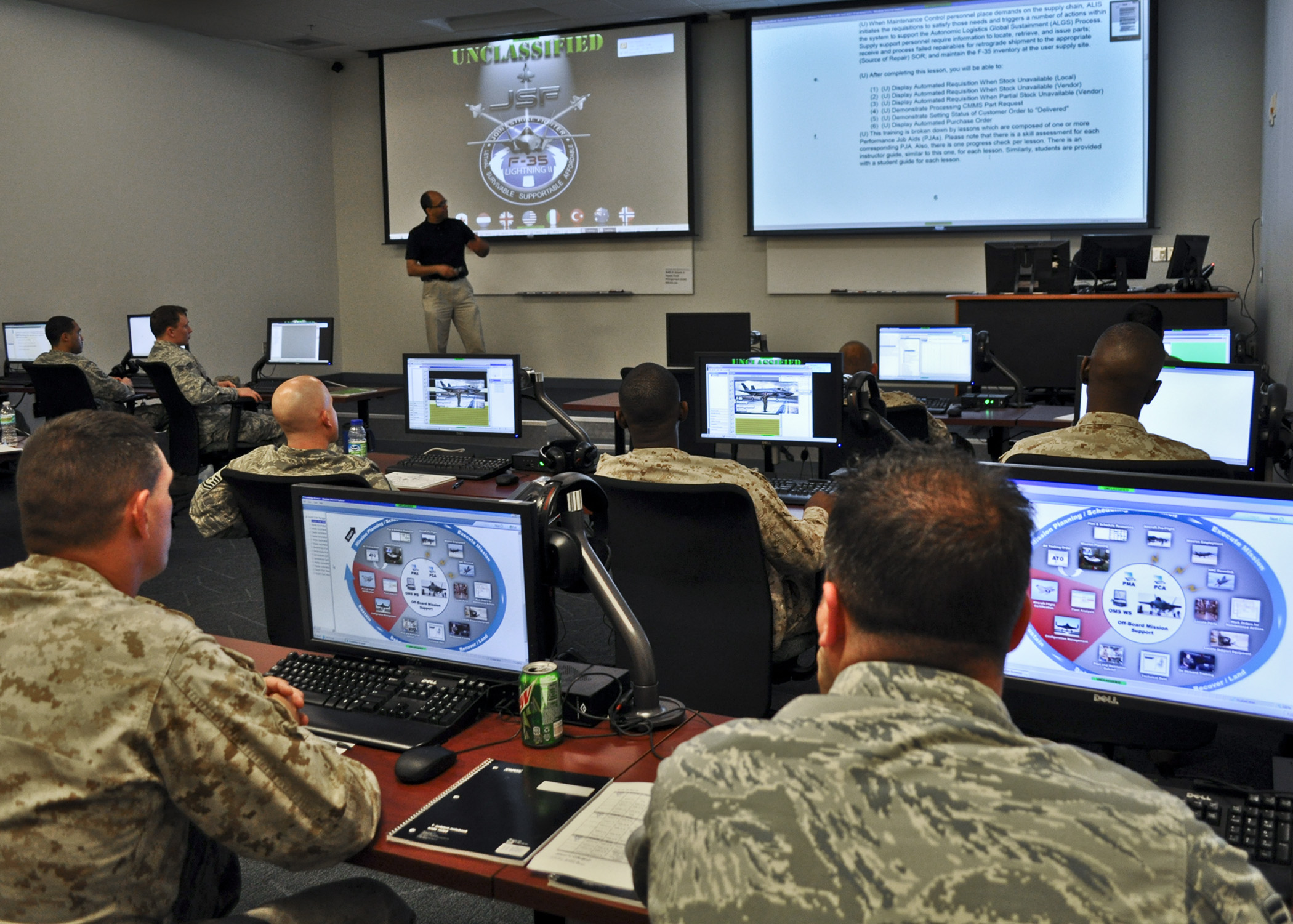
Airmen from Eglin’s 96th Logistics Readiness Squadron; and three F-35 units, the Air Force’s 33rd Aircraft Maintenance Squadron; the Navy’s Strike Fighter Squadron 101, and the Marine Corps, Fighter Attack Training Squadron 501, take an Autonomic Logistics Information System Supply Course at the F-35 Academic Training Center. Air Force photo by Maj. Karen Roganov.
The F-35’s Autonomic Logistics Integration System, or ALIS, completed operational testing on Feb. 19 and fielded units will be updated with this version on a priority basis, based on which units have the most pressing need, Lockheed Martin Vice President and General Manager for Training and Logistics Solutions Amy Gowder told reporters Feb. 21.
Speaking at the unit’s Orlando, Fla., facility, Gowder confirmed that ALIS 3.0 had completed “flight testing” at Nellis AFB, Nev., although this is an in-house company term and the system does not actually fly.
ALIS is a series of mobile servers mounted in two vertical racks—one classified and one not—that gathers and processes the flight experience of all the F-35 jets in a squadron, automatically ordering parts and maintenance actions as required. The 13 or so servers are transportable and go with the unit when it deploys. Lockheed and its F-35 military customers are looking at a somewhat smaller system that could deploy with a detachment of, say, six jets, as the Air Force has said it will be doing more frequently.
A team of installers travels to F-35 operating locations and updates ALIS hardware over a weekend, when missions are typically not flown, Gowder explained. Units receiving the update first will be those that are operational and flying real-world missions, followed by those doing training.
Despite it being the most up-to-date version of the logistics system, Gowder said Lockheed recognizes it must improve ALIS 3.0, as one of the major elements in its sustainment cost reduction efforts.
“One area [that] we do know” needs improvement is in the number of ALIS administrators, Gowder acknowledged. There are eight needed per squadron, and that must come down, she said, because manpower is a “key driver” of sustainment costs. Future versions will be more centralized to reduce the number of people needed to feed and maintain aircraft information.
She said the company is also looking to improve “usability liability” issues, which means that some ALIS functions actually take longer to perform than they do in legacy logistics systems. The Joint Program Office is allowing Lockheed to “roll in fixes” to both earlier versions and 3.0 to “improve usability.”
Another area slow to pay off is in automated test. ALIS performs this function at the unit part level, but not yet for the overall system, which Gowder said is “where the big bang for the buck is.”
The company and JPO are deeply into discussions about version 4.0, which was originally slated to be released in 2019, but Gowder suggested that target won’t be met, because of new requirements being added and the differing needs of international users.
“We may choose to defer some nice-to-have” features from 4.0 to accelerate more urgently needed improvements, such as cybersecurity, she noted. The focus will continue to be on “quality data integrity,” Gowder noted. The propulsion system—the F135 engine and its performance and parts—was added to ALIS in 2017, greatly expanding the amount of data it amasses and tracks. The company is trying to make sure that flaws from “legacy” logistics systems don’t migrate into ALIS when data is ported over to it.
Gowder asserted that the release of 3.0 fixes some of the problems that have led to F-35 sustainment costs taking too long to come down, and as it spreads throughout the fleet in 2018, “I think you’ll see a big improvement” in sustainability this year, she predicted. With a further update in 2019, more progress should be made, she added.